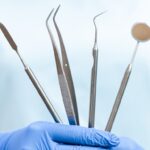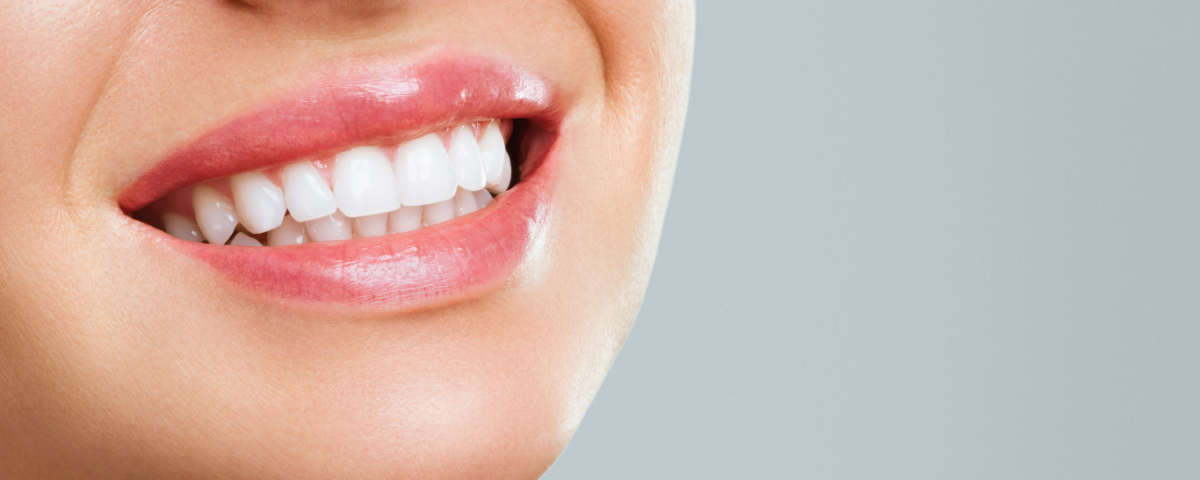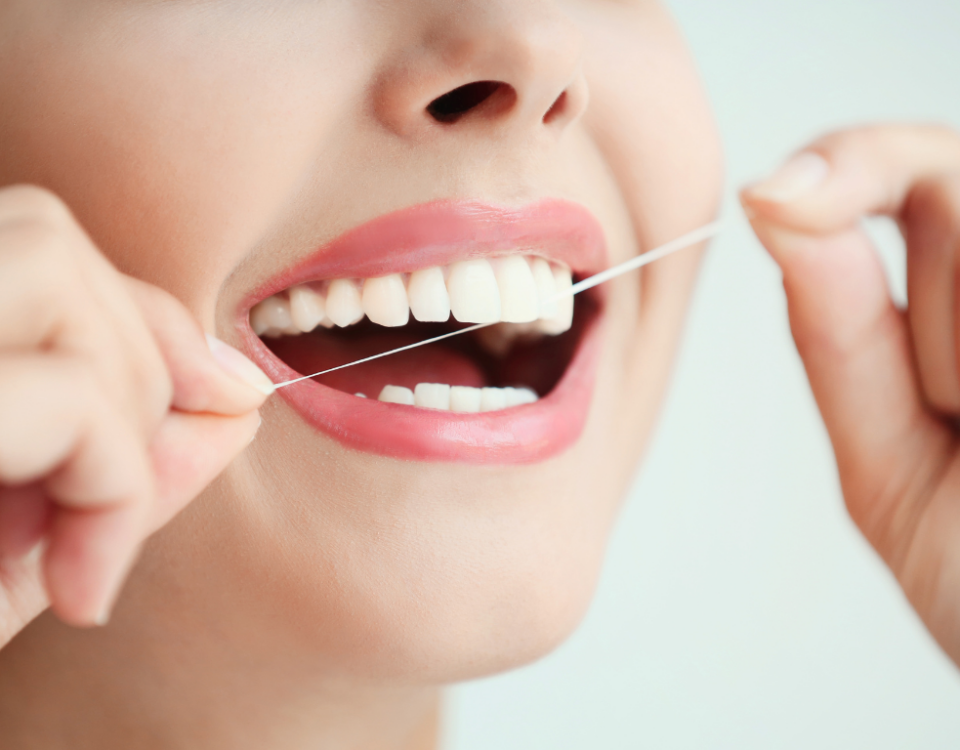
Invisalign vs. Competitors: Our Complete Guide
February 2, 2024
Understanding Out-of-Network Insurance Coverage: What You Need to Know
March 20, 2024Key Takeaways:
Teeth Cleaning Is Essential:
This blog highlights the significance of professional dental cleaning for ensuring good oral health, including the removal of plaque, tartar, and bacteria that could contribute to gum disease, cavities, or bad breath.
Frequency of Cleanings:
Most experts advise scheduling teeth cleaning appointments every six months to effectively eliminate plaque and tartar buildup on teeth, helping protect individuals against costly and painful treatments in the future. Regular appointments not only prevent future dental issues but can save both money and pain in treatment costs over time.
Comprehensive Cleaning Process:
This blog details what happens during a professional teeth cleaning appointment, from visual inspection and plaque removal to dental scaling and polishing, down to the special tools needed. Furthermore, professional cleanings should supplement daily oral care routines for optimal oral health.
Let’s explore a commonly asked question: “Is teeth cleaning necessary at a dentist’s office?” – we will discuss the benefits of regular teeth cleaning, how often you should schedule a cleaning, and what happens during a teeth cleaning appointment.
Learn about the signs indicating it’s time for a cleaning and the dangers of neglecting oral health, and we will also provide you with simple yet effective tips to maintain optimal oral hygiene at home, ensuring your smile stays bright and your overall well-being remains in top shape.
Gain valuable insights into how routine cleanings can contribute to better oral hygiene habits and lead to a healthier, happier you.
Why Is Teeth Cleaning Important
One of the primary reasons for its importance is the removal of plaque and tartar buildup. Despite regular brushing and flossing, plaque can accumulate on teeth, leading to tartar formation if not removed. This buildup of bacteria can contribute to tooth decay and gum disease, making professional cleanings essential for preventing these dental problems.
Also, regular dental cleanings help to avoid tooth decay. Plaque buildup plays an important role in the formation of cavities. We assist in lowering the risk of cavities by eliminating plaque during cleanings and addressing early signs of decay before they worsen.
Another significant advantage of tooth cleanings is that they help avoid gum disease. Plaque and tartar can irritate and inflame the gums, causing gingivitis and, if untreated, periodontitis. Regular cleanings help to remove these dangerous substances, promoting healthy gum tissue and lowering the risk of gum disease.
Benefits Of Teeth Cleaning
Dental cleanings enable individualized care based on your specific oral needs and concerns. Whether you have sensitive teeth, orthodontic appliances, or other oral health concerns, dental professionals can customize their technique to ensure your comfort and effectiveness during cleanings.
Gum disease, if left untreated, can progress to advanced stages where it affects the supporting structures of the teeth, leading to tooth loss. Regular cleanings help prevent gum disease and preserve the stability of teeth, reducing the risk of tooth loss.
Also, for individuals with dental restorations such as fillings, crowns, or bridges, regular cleanings help maintain the longevity and integrity of these treatments. Cleanings remove plaque and tartar that can compromise the durability of dental work over time.
Keep in mind that oral health is strongly linked to overall health. Poor dental hygiene has been linked to a variety of systemic illnesses, including heart disease, diabetes, and respiratory infections. Regular dental cleanings can help you maintain good oral health and improve your general health.
How Often Should You Get Your Teeth Cleaned
The frequency of teeth cleanings can vary based on individual factors such as oral health status, risk factors for dental issues, and personal preferences. However, general guidelines recommend scheduling dental cleanings at least every six months for most individuals.
Some people may benefit from more frequent cleanings, such as those with a history of gum disease (gingivitis or periodontitis), a tendency to develop tartar quickly, or certain medical conditions that affect oral health. Your dentist or dental hygienist may recommend cleanings every three to four months in these cases to manage oral health effectively.
In rare cases where an individual has exceptionally good oral hygiene, minimal plaque buildup, and no significant risk factors for dental problems, annual or periodic cleanings may be sufficient. However, this decision should be made in consultation with your dentist based on your specific oral health needs.
What Happens During a Teeth Cleaning Appointment
A teeth cleaning appointment typically involves a thorough examination by a dental hygienist, who utilizes specialized dental tools to clean teeth and assess oral health.
Upon arrival at the dental office, the dental hygienist will greet you and begin by conducting a thorough examination of your oral cavity. This visual inspection allows them to identify any visible issues such as cavities, plaque buildup, or signs of gum inflammation. By assessing the overall condition of your teeth and gums, the hygienist can tailor the cleaning process to address specific concerns effectively.
An oral health assessment is carried out to check for signs of gum disease or other problems that might require further attention. They examine the condition of your gums, looking for redness, swelling, or bleeding, which are indicators of gum inflammation. By identifying these early signs, the hygienist can recommend appropriate treatments or further evaluation by a dentist if necessary.
What Tools Are Used For Teeth Cleaning
Several specialized tools are used during a teeth cleaning procedure to ensure thorough plaque and tartar removal and to assess oral health effectively. Here are some of the common tools used for teeth cleaning:
Dental Mirror
A dental mirror is a small, handheld equipment with a reflective surface that allows a dentist to see and access areas of the mouth that are not readily visible. It aids in the examination of teeth, gums, and oral tissues during the cleaning procedure.
Scaler
Dental scalers are dental instruments with sharp ends that are used to remove plaque and tartar from the teeth’s surfaces and gum lines. There are various sorts of scalers, such as hand scalers and ultrasonic scalers. Hand scalers are operated manually, requiring expertise and precision to effectively remove buildup. Ultrasonic scalers use high-frequency vibrations to break up and remove plaque and tartar more effectively.
Dental Floss and Interdental Brushes
They are used to clean between teeth and along the gum line, where toothbrushes may not be as efficient. They aid in the removal of plaque and food particles from confined places, supporting proper dental hygiene.
Air-Water Syringe
During the cleaning operation, an air-water syringe is utilized to administer a controlled stream of both air and water. It helps to rinse away debris, cool the teeth and gums, and improves the dental professional’s visibility.
These tools, along with proper technique and expertise, enable dental professionals to perform thorough teeth cleanings, remove plaque and tartar effectively, polish tooth surfaces, and assess oral health comprehensively. Regular dental cleanings using these tools are essential for maintaining optimal oral hygiene and preventing dental issues.
What Steps Consider Teeth Cleaning
Teeth cleaning, often called dental prophylaxis or scaling and polishing, is a professional dental technique used to remove plaque, tartar (calculus), and stains from the teeth. It entails various steps and treatments carried out by a dental hygienist or dentist. Here’s an overview of the steps of how teeth cleaning is processed:
Preparation
The dental professional will examine your teeth and gums to look for indicators of dental problems such as cavities, gum disease, or oral anomalies. X-rays can be used to evaluate the general health of your teeth and underlying tissues.
Scaling
Using specialized instruments, the dental hygienist or dentist meticulously removes plaque and tartar deposits from the surfaces of your teeth, particularly in difficult-to-reach regions like between teeth and along the gumline. This process, known as scaling, helps prevent gum inflammation and tooth decay.
Polishing
After scaling, the teeth are polished to eliminate surface stains and smooth any uneven regions of enamel. This is usually done with a rotating rubber cup or a handheld device with polishing paste, which results in a cleaner and brighter appearance.
Optional Fluoride Treatment
In some circumstances, a fluoride treatment may be used after cleaning to strengthen tooth enamel and prevent decay. Fluoride promotes tooth remineralization and is especially advantageous for people who are more prone to cavities.
Prioritizing regular teeth cleanings as part of your preventative dental care is a proactive investment in the long-term health of your teeth, gums, and mouth. These routine consultations not only assist in protecting your smile but also improve your general health and quality of life.
Signs That You Need Teeth Cleaning
Certain signs indicate the need for teeth cleaning, including the presence of harmful oral bacteria, the development of dental cavities, and a decline in overall oral care.
If you notice a sticky film on your teeth or a rough texture along the gum line, it could be a sign of plaque and tartar accumulation. Professional cleanings can effectively remove these deposits, preventing tooth decay and gum disease.
Also, chronic bad breath (halitosis) that doesn’t improve with regular brushing, flossing, and mouthwash may be a sign of underlying oral health issues such as gum disease or bacterial buildup on the tongue. A thorough teeth cleaning can help address these issues and freshen your breath.
If you experience heightened sensitivity to hot, cold, sweet, or acidic foods and beverages, it could be due to exposed tooth roots from gum recession or enamel erosion.
Keep in mind that healthy gums should not bleed during brushing or flossing. If you notice bleeding, tenderness, or inflammation of the gums, it could indicate gingivitis (early stage of gum disease) or periodontitis (advanced gum disease).
Professional cleanings and proper oral hygiene can help manage and reverse these conditions.
Symptoms Of Plaque And Tartar Buildup
Here are the following symptoms of tartar and plaque buildup that can impact your oral health:
- Yellowish and brown stains on teeth
- Chronic bad breath
- Visible plaque
- Tooth or teeth discoloration
- Gum inflammation
- Receding Gums
- Pain and discomfort
- Changes in bite or tooth alignment
Recognizing the symptoms of plaque and tartar development is necessary to effectively prevent and manage these symptoms – if you have any of the following symptoms, book an appointment with us at Langley Dental Care today.
Signs Of Gum Disease
Signs of gum disease may manifest as bleeding gums, persistent bad breath, and the need for specialized dental care, prompting individuals to consider the benefits of dental insurance coverage.
Bleeding gums are often one of the initial indicators of gum disease, typically caused by the buildup of plaque along the gum line. Chronic halitosis, or bad breath, can also be a sign of underlying gum issues that need attention from a dentist specializing in periodontal care.
What Are The Risks Of Not Getting Your Teeth Cleaned
Neglecting regular teeth cleanings can lead to increased dental costs due to potential treatments, missed preventive dental benefits, and heightened risks of dental cavity development, underscoring the importance of preventive care.
Routine teeth cleanings play a crucial role in maintaining oral health and preventing costly procedures down the line. Without regular cleanings, dental problems can escalate, requiring more extensive and costly treatments such as root canals, extractions, or periodontal surgeries.
Also, neglected plaque and tartar can lead to oral infections, such as abscesses or periodontal abscesses, which are painful and require prompt dental intervention.
Can Plaque And Tartar Lead To Tooth Decay?
Plaque and tartar buildup can indeed lead to tooth decay if left untreated, necessitating dental procedures, consistent toothbrushing, and ongoing dental education to prevent oral health complications.
When plaque, a sticky film of bacteria, combines with minerals in saliva, it hardens into tartar, which poses a serious risk to dental health. This accumulation provides a breeding ground for harmful bacteria that attack tooth enamel, leading to decay. Regular dental check-ups to remove tartar buildup and professional cleanings play a pivotal role in preventing decay.
Coupled with daily brushing and flossing, these preventive measures significantly reduce the chances of cavities and other dental issues.
Can Gum Disease Lead To Tooth Loss?
Untreated gum disease, also known as periodontal disease, can proceed to severe stages, endangering your oral health and potentially causing tooth loss. As gum disease progresses, it can cause irreversible damage to the teeth’s supportive components, such as the gums, periodontal ligament, and underlying bone.
Gum disease often begins with gingivitis, which is characterized by gum inflammation, redness, swelling, and occasional bleeding while brushing or flossing. When left untreated, gingivitis can progress to periodontitis, a more serious form of gum disease characterized by the formation of pockets between the gums and teeth. These pockets can store bacteria and plaque, causing infection, inflammation, and tissue damage.
Appropriate treatments for gum disease may include professional cleanings (scaling and root planing) to remove plaque and tartar buildup, antibiotic therapy to control bacterial infection, and in advanced cases, surgical interventions such as gum grafting or periodontal surgery.
How Can You Maintain Good Oral Hygiene At Home?
Here are some essential tips to help you maintain optimal oral health:
Use fluoride toothpaste and a soft-bristled toothbrush to brush your teeth at least twice a day, preferably in the morning and before bedtime. Brushing helps remove plaque, bacteria, and food particles from tooth surfaces and along the gum line.
Flossing once a day is essential for cleaning between teeth and along the gum line where toothbrush bristles may not reach effectively. Use proper flossing techniques to remove plaque and prevent cavities and gum disease. We will discuss flossing techniques in more detail in the following section.
Incorporate an antimicrobial mouthwash into your oral hygiene routine to help reduce bacteria, freshen your breath, and protect against gum disease. Choose a mouthwash with fluoride for added cavity protection.
Use a tongue scraper or the back of your toothbrush to gently clean your tongue surface. This helps remove bacteria and prevent bad breath.
What is also a very important step when it comes to oral hygiene is eating a balanced diet rich in fruits, vegetables, whole grains, lean proteins, and low-fat dairy products, as well as staying hydrated, and of course, avoiding smoking. Limit sugary and acidic foods and beverages, as they can contribute to tooth decay and enamel erosion.
What Are The Best Practices For Flossing Your Teeth?
Effective flossing techniques are crucial for preventing tooth decay, eliminating harmful oral bacteria, and reducing the risk of dental cavities, highlighting the importance of proper interdental care.
There are different types of dental floss available, including waxed, unwaxed, flavored, and tape floss. Choose a floss that suits your preferences and fits comfortably between your teeth. If you have tight spaces between your teeth, consider using a thinner floss or flossing tape. Cut a piece of floss about 18 to 20 inches long. Wind most of the floss around your middle fingers, leaving about 1-2 inches of floss to work with.
Hold the floss tightly between your thumbs and index fingers. Use a gentle back-and-forth motion to guide the floss between your teeth, avoiding snapping or forcing it, which can injure your gums.
As you floss, make sure to clean both sides of each tooth by moving the floss up and down. Focus on reaching down to the gum line to remove plaque and debris effectively.
By following these best practices for flossing, you can effectively remove plaque and food particles, reduce the risk of dental disease, and maintain a healthy smile.
Schedule Your Teeth Cleaning Appointment Today at Langley Dental Care
Take care of your dental health by scheduling a teeth cleaning appointment at Langley Dental Care today. Don’t wait until dental problems worsen; frequent cleanings can help prevent plaque accumulation, gum disease, and other oral health issues. Our expert team is ready to keep your smile healthy and vibrant. Schedule your appointment today to enjoy a confident, healthy smile for years to come.
Frequently Asked Questions
Is Teeth Cleaning Necessary?
Yes, teeth cleaning is an essential part of maintaining good oral hygiene. It helps to remove plaque, tartar, and bacteria from your teeth and gums, which can lead to tooth decay and gum disease if left untreated.
How often should I get my teeth cleaned?
It is recommended to get your teeth cleaned by a professional every 6 months, or as advised by your dentist. However, if you have certain dental issues or a history of gum disease, your dentist may suggest more frequent cleanings.
What are the benefits of teeth cleaning?
Teeth cleaning not only removes plaque and tartar buildup, but it also helps to prevent bad breath, tooth decay, and gum disease. It can also improve the appearance of your teeth by removing surface stains and promoting a brighter smile.
Does teeth cleaning hurt?
Generally, teeth cleaning is not a painful procedure. You may experience some mild discomfort or sensitivity during the process, but it should not be overly painful. If you have sensitive teeth, your dentist can use numbing agents to help alleviate any discomfort.
Can I clean my teeth at home instead of going to the dentist?
While brushing and flossing at home is important for maintaining good oral health, it is not a substitute for professional teeth cleaning. A dental hygienist has specialized tools and techniques to thoroughly clean your teeth and remove plaque and tartar that cannot be removed by regular brushing.
What can I expect during a teeth cleaning appointment?
During a teeth cleaning appointment, your dental hygienist will use specialized tools to remove plaque and tartar from your teeth and below the gum line. They may also polish your teeth and apply fluoride to help prevent tooth decay. The process is painless and typically takes between 30 minutes to an hour.



